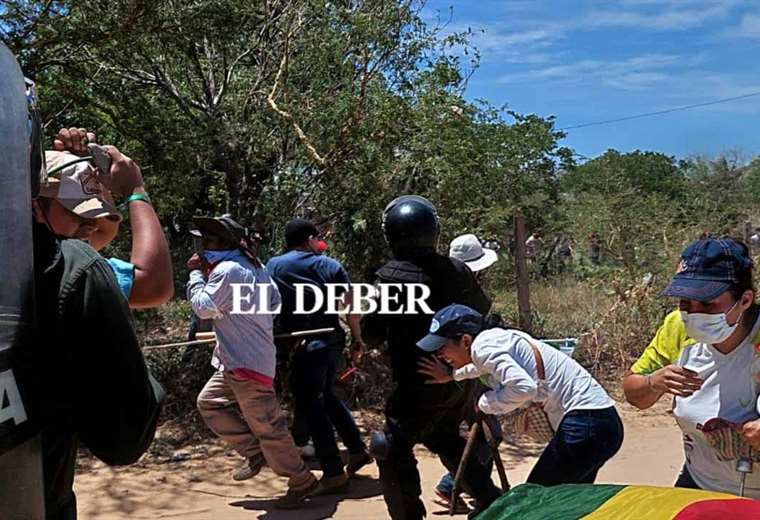Organizations and lawyers specializing in gender and computer crimes considered it “serious” that a participant of the Big Brother television program implied that he would publish intimate photos of his ex-partners if they did not act as he wanted, which put the discussion on the lack of protection of those who are victims of non-consensual dissemination of material on the Internet.
Under the program, Agustín Guardis implied that he was willing to spread intimate photos that his ex-partners sent him “if they send a booger”which quickly went viral on social networks, generating a new debate on whether or not the non-consensual dissemination of material on the Internet is a crime and the possibility of counteracting the wave of misinformation that arises every time this problem emerges in public dialogue.
“It is very serious. In Argentina, the dissemination of intimate images without consent is not regulated as a crime, although in some jurisdictions it is a misdemeanor. Such is the case of the City of Buenos Aires,” Amnesty International (AI) published on its social networks. ) Argentina, minutes after the video showing a round among the men of “la Casa” where the most rated program on TV takes place.
Augustine, participant of #GHHe claimed to have intimate photos of his exes and suggested that “if they send any booger to each other”, he would spread them.
What you need to know about the dissemination of intimate images without consent ?#Big Brother pic.twitter.com/zYupaSYAhd
— Amnesty International Argentina (@amnistiaar) December 6, 2022
In conversation with Télam, the lawyer specializing in computer crimes, Marina Benítez Demtschenko, said that “what is striking in this scene is how Agustín articulates a veiled coercion, I say veiled because it is not an explicit coercion as provided for in the Code Criminal. It does not conform literally to the letter of what a criminal figure or a legal institution proposes. So, if it is not literal as the Criminal Code proposes, it cannot be denounceable by analogy, for example”.
“When a man intends to disseminate intimate material, he does not always announce it in advance, for example, by threatening or extorting the victims. Many times he does it in this subliminal way, and that is where we find ourselves defenseless,” she added. .
“When a man intends to disseminate intimate material, he does not always announce it in advance, for example, by threatening or extorting the victims. Many times he does it in this subliminal way, and that is where we find ourselves defenseless”Marina Benitez Demtschenko
He added that “coercion is a threat that involves raising it so that the other person does something or stops doing it, that is, it is a threat for the other person to act accordingly. So, what we have is a legal difficulty because the dissemination of intimate images per se is not a crime in the Argentine Penal Code”.
Benítez Demtschenko commented that “all the time we see in the media, including on social networks, that the dissemination of intimate images is a crime, because it is normally associated with extortion.”
And he clarified that “sextortion is a marketing term, because sextortion does not exist in the Penal Code, extortion does exist.”
“It is necessary to differentiate this because every time it is said ‘this is a crime’, those who are affected by this harmful conduct are empowered to file a complaint. But the only thing that generates is confusion and misinformation because when these women go to the police stations or prosecutors tell them: “No, it is not a crime. You cannot report it because you would file a file without any figure to support it because it is not in the penal code,” the lawyer explained.
general confusion
He insisted that “one of the biggest problems of the media and spaces where information is disseminated is to make these mistakes, is to pretend that the dissemination of intimate images and sextortion are the same thing, when in reality if there is no extortion, there is no crime; it is confusing sexting with the dissemination of intimate images and it is talking about revenge-porn. Concepts and terms that are generating general confusion are appealed to.”
The professional specified that “the specificity of the niche does not only require knowledge about technology, but also requires knowledge of how the problem of digital violence operates around the dissemination of intimate images and the aggressors all the time look for ways to escalate attacks, but also not to get stuck”.
Congress still owes a deep and participatory debate that allows answers to these situations, he remarked.
In this sense, Benítez Demtschenko presented in 2017 a bill for the inclusion of the dissemination of non-consensual material as a criminal figure. In 2018, she presented another to incorporate digital violence and telematic violence in the Law for the comprehensive protection of women. The latter had half a sanction in the Chamber of Deputies of the Nation.
“Then both bills lost parliamentary status and had to be reintroduced in 2019 and 2021, respectively. As of today, the legislative agenda has not taken over”the lawyer concluded.








